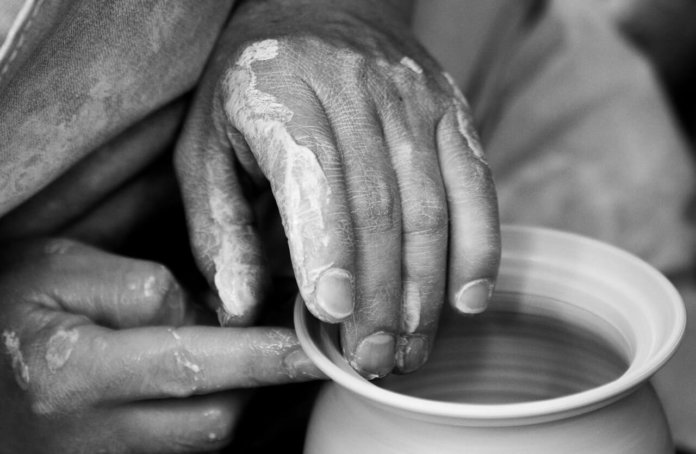
Image source: Pixabay via Pexels
Seth Green is a master artist in every sense of the word, and his love is ceramics. Those who watch him work become mesmerised as he hovers over a potter’s wheel turning clay into a usable item. It’s almost as if you are hearing a symphony playing as the sodden lump spins and dances its way into the shape it intended to take.
His most recent pieces are ewers – beautiful pitchers of ancient origin formed not just for functionality but also to express the artist’s creativity. When looking at an ewer – its design, form and features – the correlations with business continuity planning, especially for family businesses, begin to surface.
The ewer holds liquid until its holder wants to enjoy its contents, similar to how a business holds the human and financial assets. The design of the container and the integrity of its walls enable the company and the ewer to receive assets and protect them from leakage, waste, spoilage or loss. Elements of a succession plan that correlate with the solid walls of the ewer are employment policies, executive compensation plans and management contingency plans.
An ewer’s handle can be ornamental, but it is important that it be functional, strong and sturdy, allowing the liquid to be controlled in its distribution. Family businesses, in a similar fashion, need someone to have the ability to make decisions about where to take the business, and how to use assets and position employees to create a successful company. One of these features might be funded by buy-or-sell agreements that allow for proper control by the person best suited to make those decisions. Another might be an operating agreement that stipulates how decisions about the business will be made under certain conditions.
The spout is positioned at the top of the ewer, an elegant and intelligent design, allowing for the person pouring the liquid to carefully get it into some other container – it offers flexibility and precision to the user. The spout can represent a dividend policy that stipulates how assets can be dispersed so that there is an expectation of how dividends will be paid out. Shareholders will want to know how to access assets as needed. A well thought out structure that is communicated effectively will benefit the company and shareholders. Transparency with this policy will avoid relationship problems and allow the company to control cash flow for successful business operations.
The most interesting part of the process of making an ewer is that you don’t know if it will look or function as desired until it is fired in the kiln and exposed to extreme heat. If material selection and construction follow correct principles, the resulting ewer is functional and beautiful; if not, the pitcher will crack and be ruined.
It is in much the same way that we find out how effective our business continuity plans are. How solid is the handle? How sturdy is the body of the ewer? How efficient is the spout? If these can’t be answered, check into their composition before your business has a kiln-like experience. It takes work, collaboration and communication but when done right, a proper, constructed business continuity plan is a masterpiece that can be enjoyed by next generation members.









